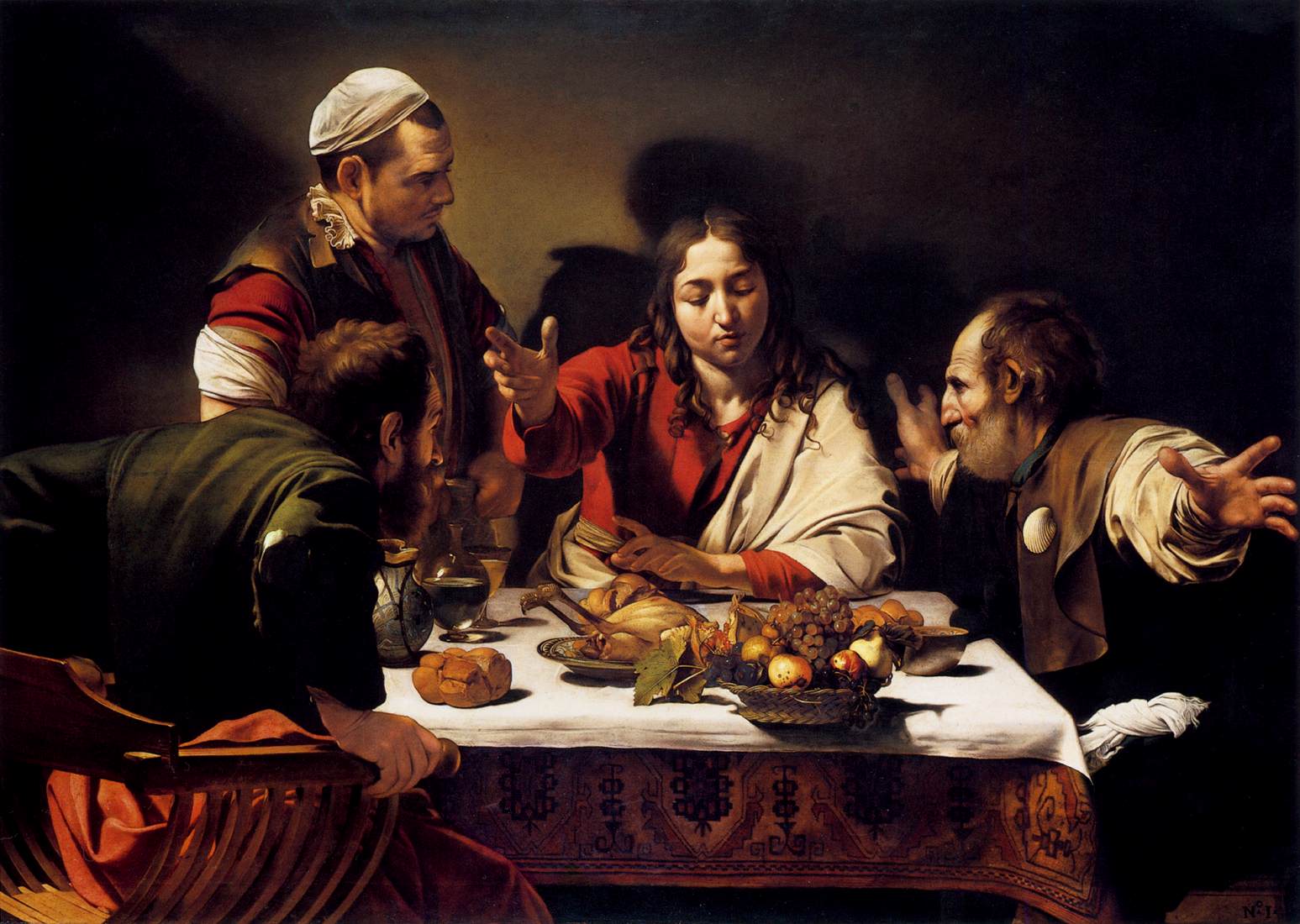
Historical
Oriental Rugs & Carpets
in Medieval European Paintings
Main Page
|
|

CARAVAGGIO
(b. 1571, Caravaggio, d. 1610, Porto Ercole)
Supper at Emmaus
1601
Oil on canvas, 141 x 196 cm
National Gallery, London
The gospel according to St Luke (24:13-32) tells of the meeting of two disciples
with the resurrected Christ. It is only during the meal that his companions
recognize him in the way he blesses and breaks the bread. But with that, the
vision of Christ vanishes. In the gospel according to St Mark (16:12) he is said
to have appeared to them "in an other form" which is why Caravaggio did not
paint him with a beard at the age of his crucifixion, but as a youth.
The host seems interested but somewhat confused at the surprise and emotion
shown by the disciples. The light falling sharply from the top left to
illuminate the scene has all the suddenness of the moment of recognition. It
captures the climax of the story, the moment at which seeing becomes
recognizing. In other words, the lighting in the painting is not merely
illumination, but also an allegory. It models the objects, makes them visible to
the eye and is at the same time a spiritual portrayal of the revelation, the
vision, that will be gone in an instant.
Caravaggio has offset the transience of this fleeting moment in the tranquillity
of his still life on the table. On the surfaces of the glasses, crockery, bread
and fruit, poultry and vine leaves, he unfurls all the sensual magic of textural
portrayal in a manner hitherto unprecedented in Italian painting.
The realism with which Caravaggio treated even religious subjects - apostles who
look like labourers, the plump and slightly feminine figure of Christ - met with
the vehement disapproval of the clergy.